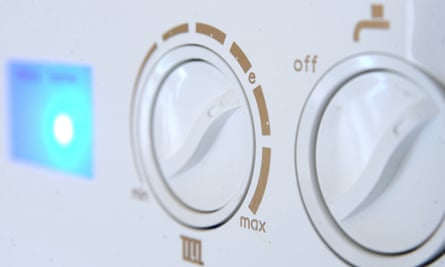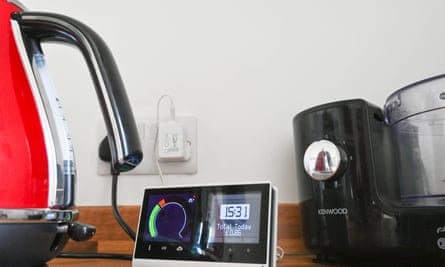
Energy bills have rocketed during the cost of living crisis, making the price cap one of the most closely watched figures by worried households. The energy regulator for Great Britain, Ofgem, has announced that the cap, which limits how much suppliers can charge households for each unit of gas and electricity they use, will fall from October. Here we explain how the cap works, what it means for energy bills this autumn, and the help available if you are struggling to pay.
What has happened?
The energy price cap has dropped below £2,000 a year for the first time in 18 months. From October, the cap, set by Ofgem for households in England, Wales and Scotland, will fall by £151 to £1,923 a year for a typical annual energy bill. This compares with £2,074 a year over the summer. For customers who have prepay meters or pay by standard credit (cash or cheque) the cap is slightly higher than for people who pay by direct debit, at £1,949 and £2,052 respectively.
Remind me, what is the energy price cap?
 View image in fullscreenThe energy price cap has dropped below £2,000 a year for the first time in 18 months. Photograph: Joe Giddens/PA
View image in fullscreenThe energy price cap has dropped below £2,000 a year for the first time in 18 months. Photograph: Joe Giddens/PA
More than half of energy customers (54%) still are not sure what the price cap is or what it does, according to a recent poll by the comparison website Uswitch.
Introduced in 2019, the cap sets the maximum amount energy suppliers can charge customers on “default tariffs”, which are their most basic packages. It sought to ensure consumers (back when you could actually switch to a better fixed-price deal) were not ripped off as a result of staying on their standard variable tariff.
The energy crisis changed all that. About 30 suppliers went bust and cheap fixes disappeared, with about 29m households now sitting on a default tariff.
 View image in fullscreenThe £1,923-a-year figure is the annual bill for a ‘typical’ household. Photograph: Simon Dack/Alamy
View image in fullscreenThe £1,923-a-year figure is the annual bill for a ‘typical’ household. Photograph: Simon Dack/Alamy
Is £1,923 what I’ll be paying?
Not necessarily. The £1,923-a-year figure is the annual bill for a “typical” household. The cap dictates the maximum a supplier can charge per unit of energy, not the overall size of the bill. Your actual energy costs will depend on how much gas and electricity you use.
It is worth noting that Ofgem has produced two numbers for the new price cap after changing how it calculates the typical energy bill. The £1,923 figure is comparable with the previous quarter. However, from now on, Ofgem’s cap assumes households will use 7% less electricity and 4% less gas than in previous years, meaning a lower cap of £1,834 when expressed as an annual dual-fuel energy bill for direct debit customers.
How does it work?
The cap controls the rates a supplier can charge for their default tariffs. This includes the price for each kilowatt hour (kWh) of electricity and gas (the units your bill is calculated from), and also the standing charges – a fixed amount charged each day regardless of how much gas or electricity a household uses – that everyone has to pay no matter how much they consume. The standing charge varies by region.
In the current period (up to close of play on 30 September), a customer with “typical usage” paying by direct debit or through a prepayment meter is charged a maximum of 30p a kWh for electricity and 8p a kWh for gas. From 1 October those will fall to 27.35p and 6.89p respectively.
Energy price cap graphic
Meanwhile, average electricity and gas daily standing charges, for people who pay by direct debit, currently at 53p and 29p, are increasing to 53.37p and 29.62p, or a total of 83p from October.
The cap is updated quarterly, and in November we will find out the figure for the key winter period from 1 January to 31 March 2023. The leading forecaster Cornwall Insight thinks bills will rise again after a recent rise in global gas market prices.
Does the cap protect people on prepayment meters?
Yes. The energy costs of about 4 million domestic customers with energy prepayment meters who pay upfront for gas or electricity using an app or by visiting a shop are protected by the cap but it is still a slightly higher figure than for those paying by direct debit.
They used to face a bigger “prepayment premium” until the government stepped in to end it. It is funding a reduction until April 2024, with Ofgem working on a plan to eradicate it permanently after that.
 View image in fullscreenA prepayment gas meter outside a property in London. Photograph: Jill Mead/The Guardian
View image in fullscreenA prepayment gas meter outside a property in London. Photograph: Jill Mead/The Guardian
Why are heat network customers out in the cold?
Customers who live in flats with communal heating systems are supplied by a single supplier that procures energy on their behalf. As a result, their supply is considered to be commercial rather than domestic and is not controlled by the cap.
There are about 480,000 households with this kind of setup – including people in council-owned tower blocks. Some households have been hit with a staggering 350% rise in their bills.
Heat network operators, such as local councils, can apply for help with costs through the government’s energy bill discount scheme. Savings are supposed to be passed on to consumers, and if your supplier secures a discount they must contact you to tell you how they will pass it on to you.
If you have not received one and you think you should have, you can complain. You can contact your supplier using the template letter on Gov.uk. If you do not hear back within eight weeks complain to the energy ombudsman.
What help is available?
Less than before. The £400 energy support given to all households is not being repeated this year, with the government instead making cost of living payments to about 8m vulnerable households. This includes a £900 payment for those on means-tested benefits, £300 for pensioners and £150 for disabled people.
If you are struggling, contact your supplier as soon as you can. Under Ofgem rules, suppliers must work with you to agree on a payment plan you can afford. There are different things you should do if you cannot afford to top up your prepayment meter. You should be able to get temporary credit from your supplier. Other options include applying for an energy grant.
For everyone else, the hope is that energy suppliers will soon begin offering deals priced below the energy cap to win over new customers.
This article was amended on 25 August 2023. The energy price cap refers to average annual charges, not unit prices, for electricity and gas.
